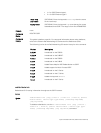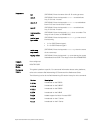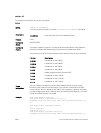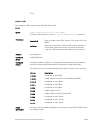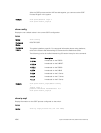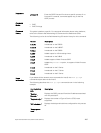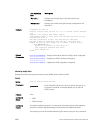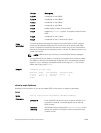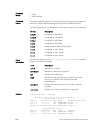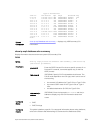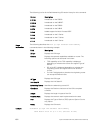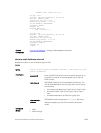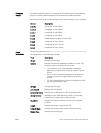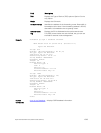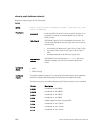
Version Description
9.2(1.0) Introduced on the Z9500.
8.3.19.0 Introduced on the S4820T.
8.3.11.1 Introduced on the Z9000.
8.3.7.0 Introduced on the S4810.
7.8.1.0 Added support of Multi-Process OSPF.
7.8.1.0 Added the process-id option, in support of Multi-Process
OSPF.
7.6.1.0 Introduced on the S-Series.
7.5.1.0 Introduced on the C-Series and E-Series.
Usage
Information
To isolate problems with external routes, use this command. In OSPF, external
routes are calculated by adding the LSA cost to the cost of reaching the ASBR
router. If an external route does not have the correct cost, use this command to
determine if the path to the originating router is correct. The display output is not
sorted in any order.
NOTE: ASBRs that are not in directly connected areas are also displayed.
You can determine if an ASBR is in a directly connected area (or not) by the flags.
For ASBRs in a directly connected area, E flags are set. In the following example,
router 1.1.1.1 is in a directly connected area since the Flag is E/-/-/. For remote
ASBRs, the E flag is clear (-/-/-/).
Example
Dell#show ip ospf 1asbr
RouterID Flags Cost Nexthop Interface Area
3.3.3.3 -/-/-/ 2 10.0.0.2 Te 0/1 1
1.1.1.1 E/-/-/ 0 0.0.0.0 - 0
Dell#
show ip ospf database
Display all LSA information. If you do not enable OSPF on the switch, no output is generated.
Z9500
Syntax
show ip ospf process-id database [database-summary]
Parameters
process-id Enter the OSPF Process ID to show a specific process. If no
Process ID is entered, command applies only to the first
OSPF process.
database-
summary
(OPTIONAL) Enter the keywords database-summary to the
display the number of LSA types in each area and the total
number of LSAs.
Open Shortest Path First (OSPFv2 and OSPFv3)
1299




